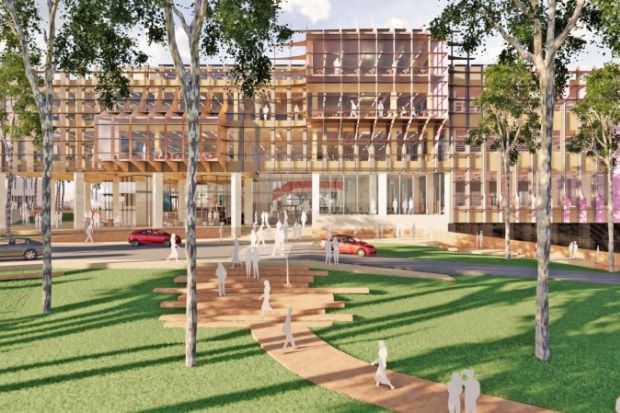Rather than sending its students off-site for work experience, an Australian university plans to seed its degrees with practical learning opportunities by accommodating companies on campus.
The University of Newcastle says that the open-plan design of its A$200 million (£112 million) science, technology, engineering, maths and medicine precinct – the biggest infrastructure upgrade in its 54-year history – will make the institution more “permeable” to local businesses and community organisations.
“It’s getting away from the stale idea of having standard offices and long corridors where you don’t know what’s going on behind closed doors,” said Deborah Hodgson, Newcastle’s acting deputy vice-chancellor for research and innovation.
“This is all about open space, glass walls, flexible learning spaces that can be changed. We won’t have people come in and set up homes. They’ll essentially come in on a needs basis.”
The precinct will form the centrepiece of the main Callaghan campus in the western suburbs of Newcastle, a regional city of some 300,000 people. The university has unveiled plans for the project, to be bankrolled entirely by internal funds.
Work will start later this year with opening scheduled for 2023. Vice-chancellor Alex Zelinsky said that the long-term vision was to accommodate companies in the new campus precinct, to help realise the university’s commitment to embed work-integrated learning in every one of its undergraduate degrees.
“This will enrich our students’ experience and ensure we are delivering competitive, job-ready graduates,” he said.
Professor Hodgson said the university would seek tenants in industries including health, energy, aerospace, cybersecurity, built environment and the cognitive sciences. She said that with 35 per cent of Newcastle’s research funded by industry partners, the new precinct would take engagement to a new level.
The building will have “a lot of spaces where people can come and go”, unlike the traditional approach where “academics occupy their labs and spaces for 10 or 20 years”, she added. But Professor Hodgson rejected a description of “hot desking”.
“We want to be responsive to the changing research and educational environment,” she continued. “To do that, we need to make spaces flexible so that they might be able to turn from a teaching space to a research space to an industry space. You’re not going to do that overnight. It’s about having that dynamic flexible nature built into the design.”





